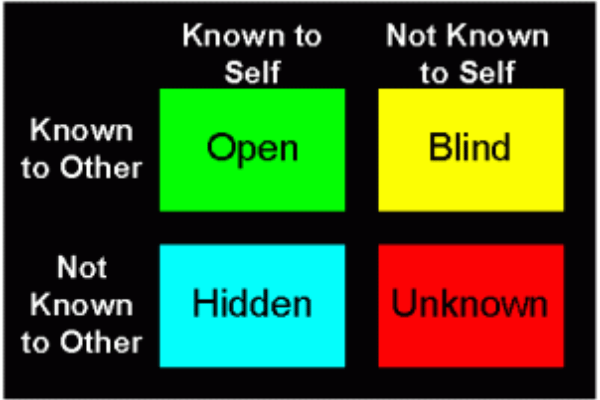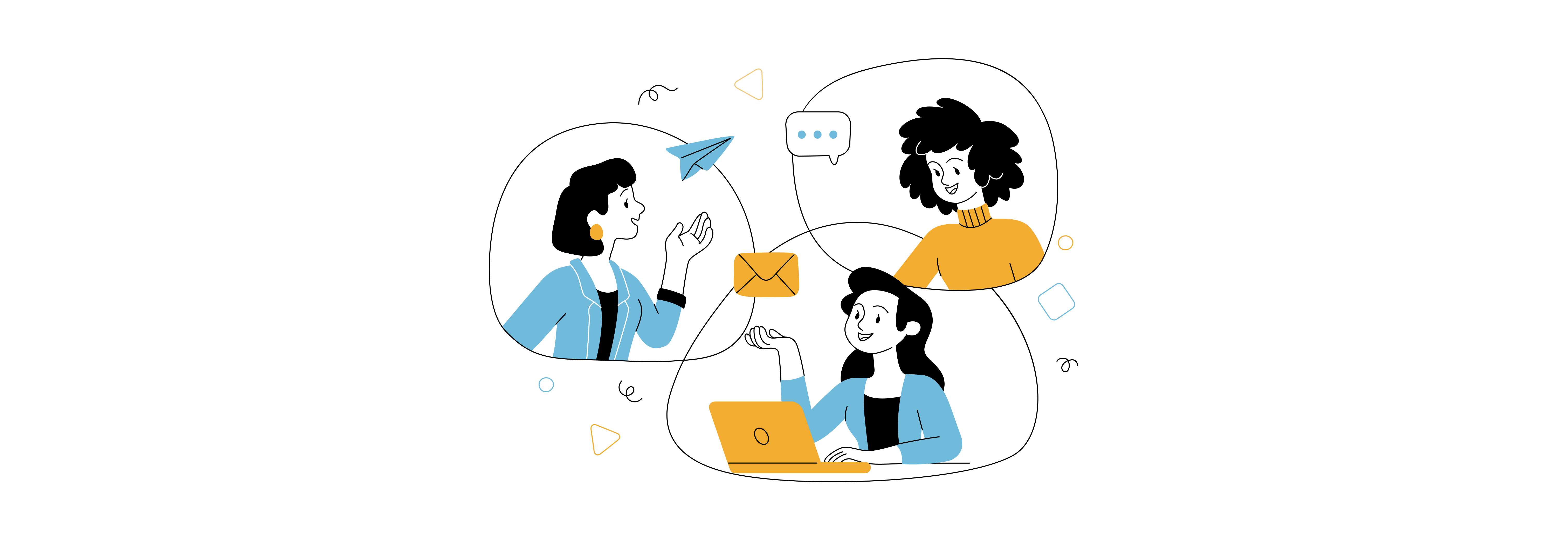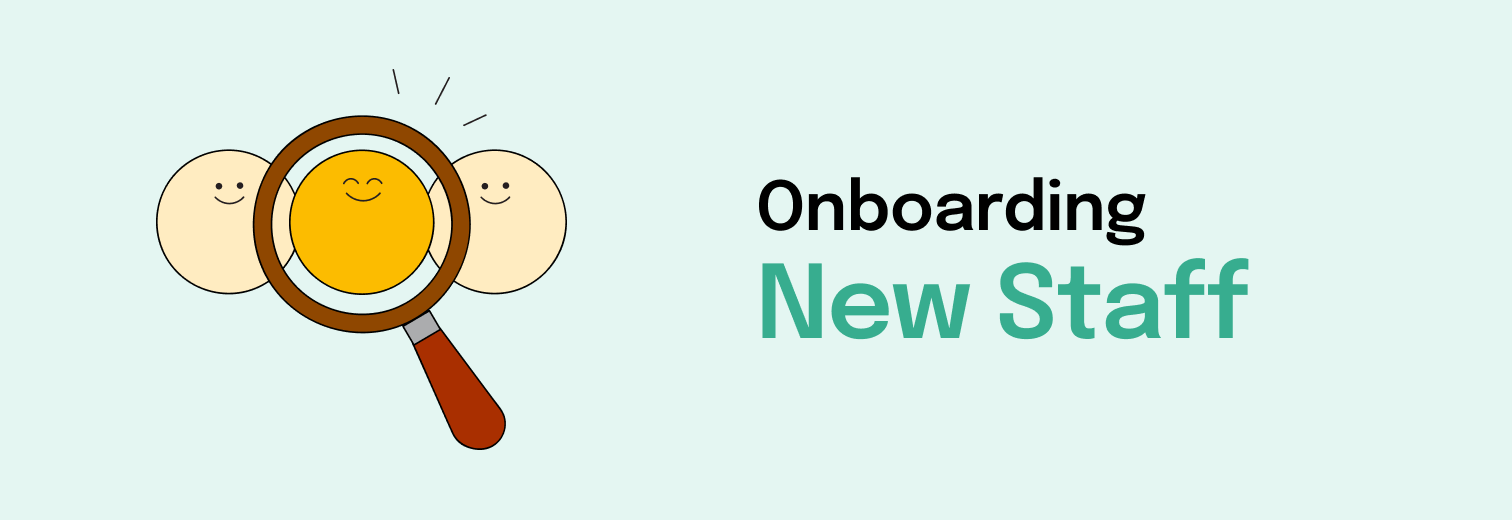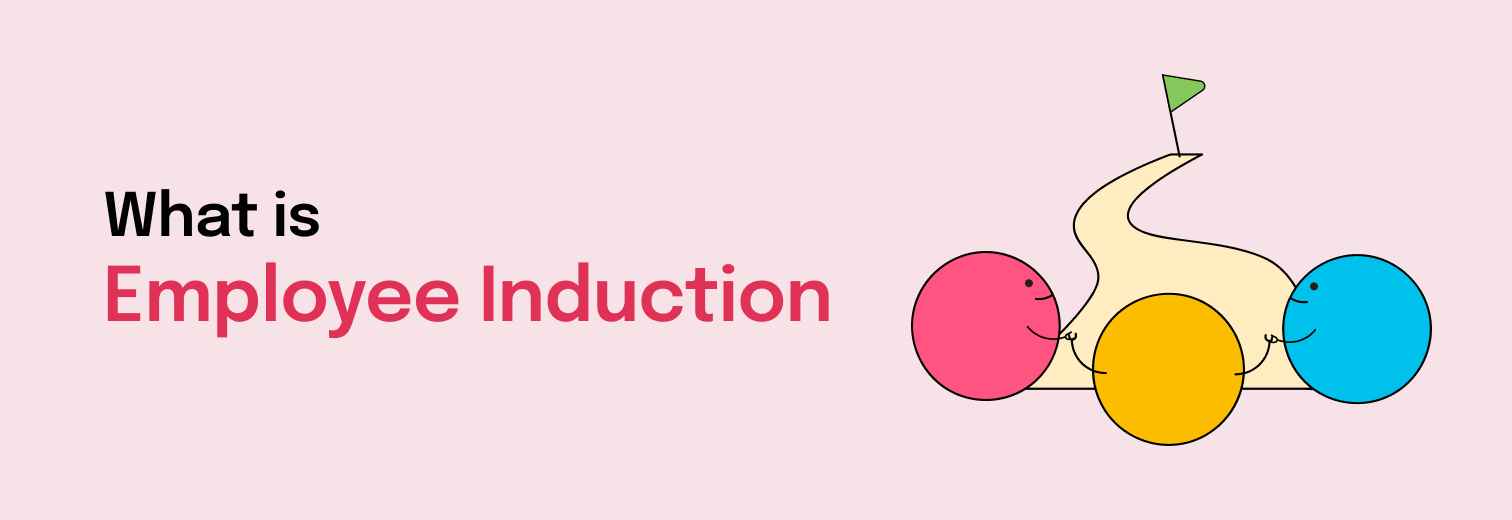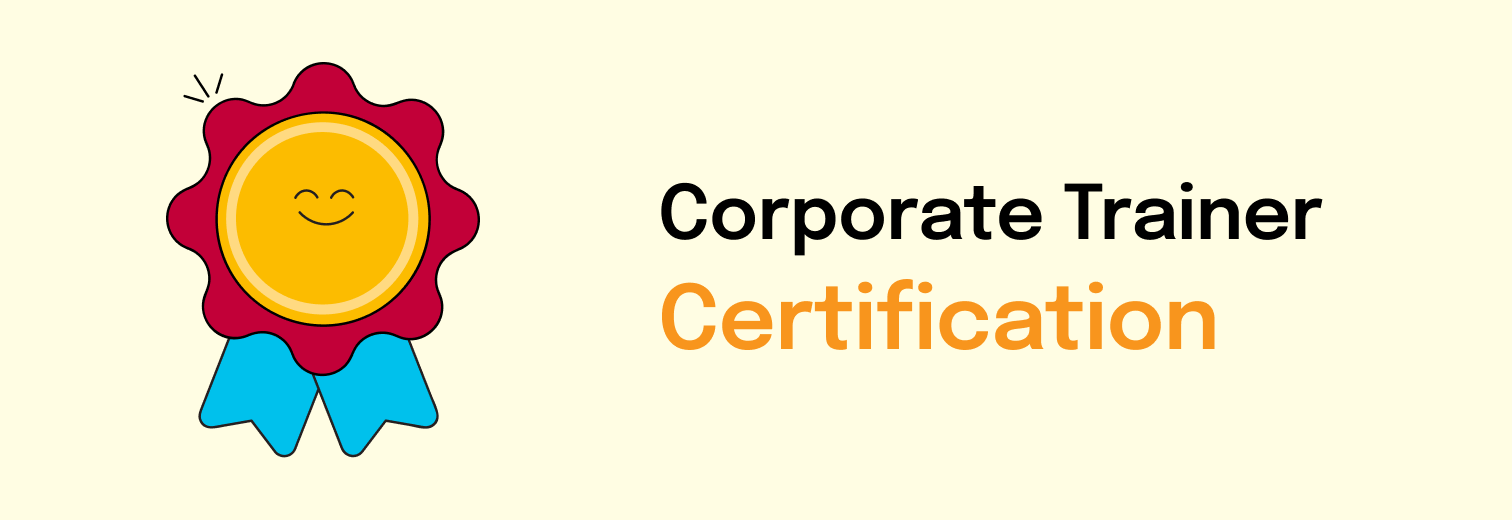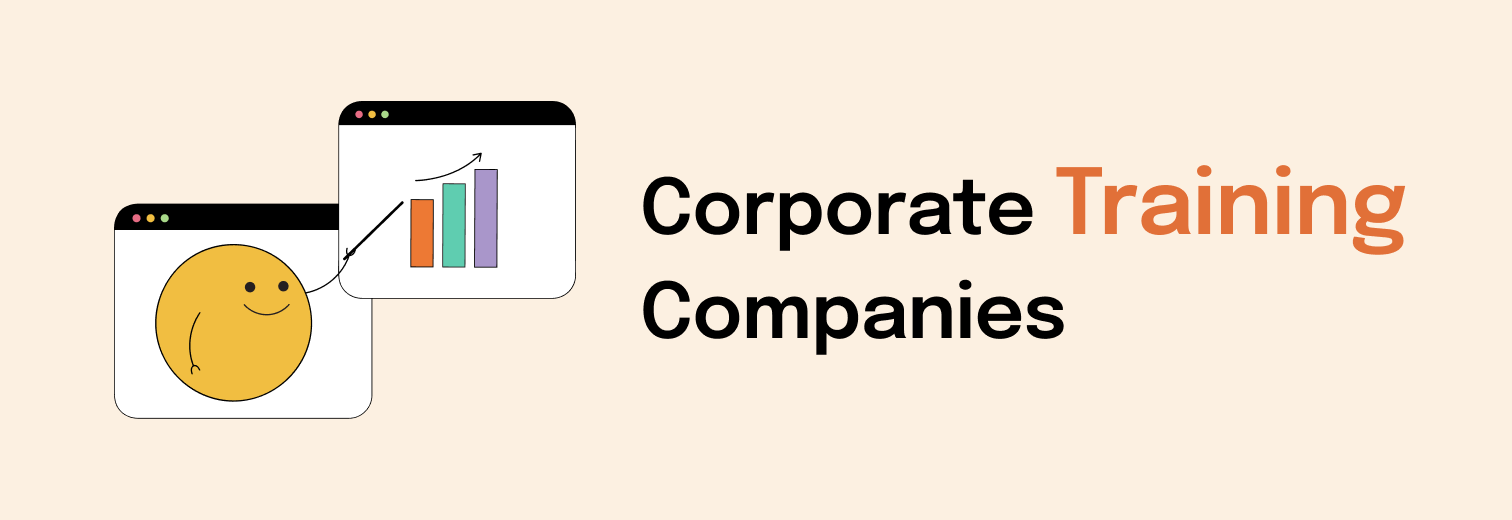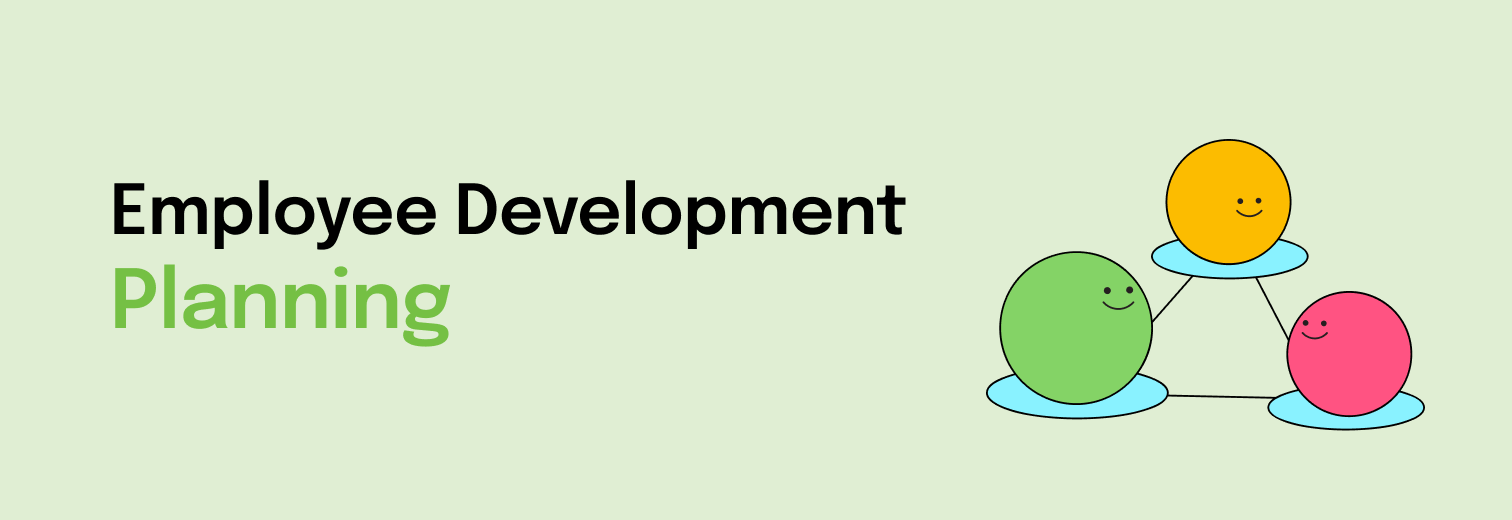One of the most effective models that can be used to improve understanding between individuals within a team or between different teams in organisations is the Johari Window.
Developed by Joseph Luft and Harry Ingham (the word “Johari” comes from Joseph Luft and Harry Ingham), there are two key ideas behind the tool:
- That individuals can build trust between themselves by disclosing information about themselves; and
- That they can learn about themselves and come to terms with personal issues with the help of feedback from others.
By explaining the idea of the Johari Window to your team, you can help team members understand the value of self-disclosure, and gently encourage people to give and accept feedback. Done sensitively, this can help people build more-trusting relationships with one another, solve issues and work more effectively as a team.
Lets dive deeper and understand the model:
The Johari Window model consists of a foursquare grid as shown in the diagram below,
Using the Johari model, each person is represented by their own four-quadrant, or four-pane, window. Each of these contains and represents personal information – feelings, motivation, etc. – about the person, and shows whether the information is known or not known by themselves or other people.
Quadrant 1: Open Area
Johari region 1 is also known as the ‘area of free activity’. This is the information about the person – behaviour, attitude, feelings, emotion, knowledge, experience, skills, views, etc – known by the person (‘the self’) and known by the group (‘others’).
The aim in any group should always be to develop the ‘open area’ for every person, because when we work in this area with others we are at our most effective and productive, and the group is at its most productive too. The open free area, or ‘the arena’, can be seen as the space where good communications and cooperation occur, free from distractions, mistrust, confusion, conflict and misunderstanding.
Established team members logically tend to have larger open areas than new team members. New team members start with relatively small open areas because relatively little knowledge about the new team member is shared.
Leaders have a big responsibility to promote a culture and expectation for open, honest, positive, helpful, constructive, sensitive communications, and the sharing of knowledge throughout their organization.
Top performing groups, departments, companies and organizations always tend to have a culture of open positive communication, so encouraging the positive development of the ‘open area’ or ‘open self’ for everyone is a simple yet fundamental aspect of effective leadership.
Quadrant 2: Blind Area (Feedback)
What is unknown by the person about himself/herself but which others know. This can be about simple information, or can involve deep issues (for example, irritating habits, feelings of inadequacy, incompetence, unworthiness, rejection) which are difficult for individuals to face directly, and yet can be seen by others. This blind area is not an effective or productive space for individuals or groups. This blind area could also be referred to as ignorance about oneself, or issues in which one is deluded. A blind area could also include issues that others are deliberately withholding from a person.
Commonly these are also known as the Blind Spot; when driving, blind spots are inevitable. Only when the driver look over his/her shoulders, the content in the blind spots can be seen. Likewise, with peer-to-peer feedback we can find out the strength and weakness of each other in terms of skills, knowledge and attitude.
But again, feedback is not something that can be dished out in a clinical way. The first requirement for feedback to be accepted by the individual and to be worked on, is an environment of trust. Some people are more resilient than others – care needs to be taken to avoid causing emotional upset. Hence issues on which feedback is sought should always be at the individuals discretion.
Very often in team sessions, this is facilitated by the leader going in first and asking the group for frank and free feedback. Such sessions are always best facilitated by an external facilitator, due to the neutrality they bring in. A few simple rituals – like the individual asking for specific feedback and then thanking every individual individually for the feedback, often helps in creating an environment conducive to open sharing.
Quadrant 3: Hidden or Avoided Area (Disclosure)
What the person knows about him/herself that others do not. The hidden area could also include sensitivities, fears, hidden agendas, manipulative intentions, secrets – anything that a person knows but does not reveal, for whatever reason. It’s natural for very personal and private information and feelings to remain hidden, indeed, certain information, feelings and experiences have no bearing on work, and so can and should remain hidden. However, typically, a lot of hidden information is not very personal, it is work- or performance-related, and so is better positioned in the open area.
By getting to know a person better, more exchanges of information will take place. You may discover about the smoking habits of a colleague, his likings in movies, food, etc. You may also discover talents that you never knew existed or you may suddenly understand why a person behaves the way he does in office, due to the background he comes from. By telling others how we feel and other information about ourselves we reduce the hidden area, and increase the open area, which enables better understanding, cooperation, trust, team-working effectiveness and productivity. Reducing hidden areas also reduces the potential for confusion, misunderstanding, poor communication, etc, which all distract from and undermine team effectiveness.
In one of the sessions we did, a person shared about the sudden & recent loss of a spouse and the challenges that he was undergoing in bringing up two small children. The man was otherwise known to be very irritable & short tempered in office. A wave of understanding passed through the group when he made this disclosure.
Quadrant 4: Unknown Area (Potential for Discovery)
This quadrant contains information, feelings, latent abilities, aptitudes, experiences etc, that are unknown to the person him/herself and unknown to others in the group. These unknown issues take a variety of forms: they can be feelings, behaviours, attitudes, capabilities, aptitudes, which can be quite close to the surface, and which can be positive and useful, or they can be deeper aspects of a person’s personality, influencing his/her behaviour to various degrees. Large unknown areas would typically be expected in younger people, and people who lack experience or self-belief.
Very often, we surprise ourselves by the limits of our powers and abilities. We do not know what we are capable of until we are put in circumstances that draw out the very best in us – or when we get the opportunity to demonstrate.
The processes by which this information and knowledge can be uncovered are various, and can be prompted through self-discovery or observation by others, or in certain situations through collective or mutual discovery, of the sort of discovery experienced on outward bound courses or other deep or intensive group work.
Again as with disclosure and soliciting feedback, the process of self discovery is a sensitive one. The extent and depth to which an individual is able to seek out discover their unknown feelings must always be at the individual’s own discretion.
Uncovering ‘hidden talents’ – that is unknown aptitudes and skills, not to be confused with developing the Johari ‘hidden area’ – is another aspect of developing the unknown area, and is not so sensitive as unknown feelings. Providing people with the opportunity to try new things, with no great pressure to succeed, is often a useful way to discover unknown abilities, and thereby reduce the unknown area.
Managers and leaders can help by creating an environment that encourages self-discovery, and to promote the processes of self discovery, constructive observation and feedback among team members. It is a widely accepted fact that the majority of staff in any organization are at any time working well within their potential.
Creating a culture, climate and expectation for self-discovery helps people to fulfill more of their potential – thereby to achieve more & contribute more to organizational performance.
Share the Johari Window concept with your team. There are many free online Johari Window resources. One such is here: http://kevan.org/johari. Using the concept of The Johari Window is a very fun way for teams to come together and bond. We will share actual experiences of activities around this in our future posts!
Do let us know how you used this concept with your team.
